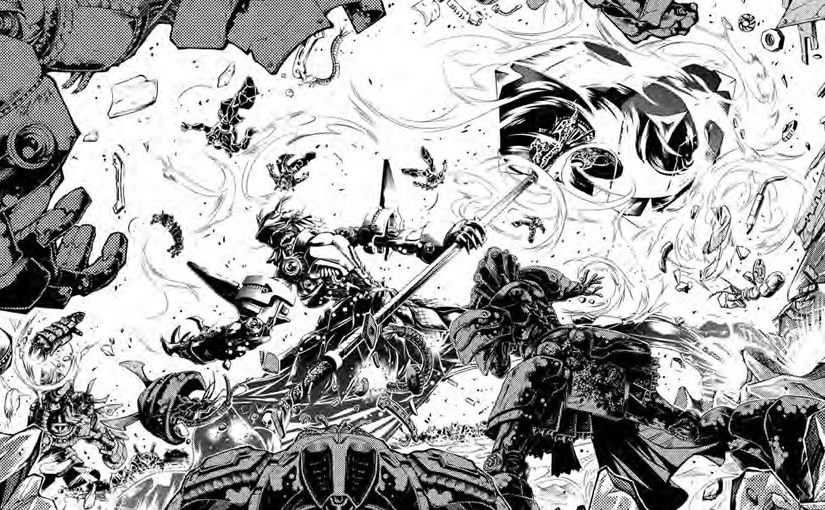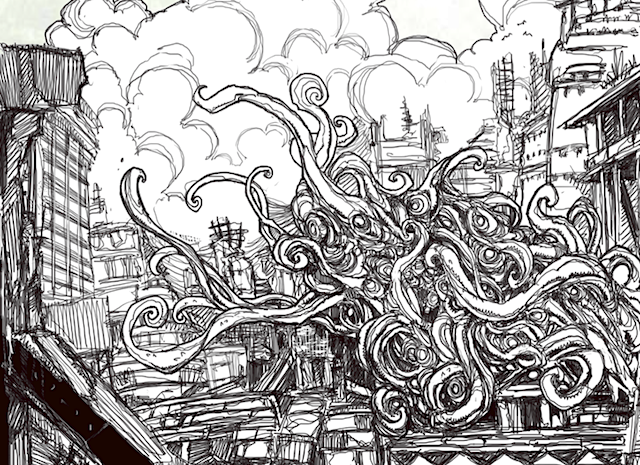Megacomplex RPG’s of 2009:
This is part 2 of a long ass post about the year of the most complext RPG’s. Here is the first bit. Below three RPG’s from 2009 that I want to discuss as testament to fulfilling player’s desire for maximum options, asymmetry and complexity. All three are fairly playable in their base format to some extent, but with their variable player powers, options, and therefore need of playtesting, all are considered behemoths in terms of system mastery. This is not to say that they were all released in 2009, but in the case of Exalted, it was at it’s maximum popularity at this time (as far as I can remember).

Exalted. This tops the list of RPG’s that were popular in 2009 and …extremely complex. While the 2nd edition had been out since 2006, and frankly Jon Chung and that crew had broken the combat system already, 2008/2009 saw the release of a massive number of Exalted books, including what I consider the most complicated and confusing RPG publication I’ve encountered: Exalted the Fair Folk. This tome I just don’t get, and still have no idea how to create a Fair Folk character for my players to fight. The tough part about Exalted is that you, as a GM, are forced to make enemies with the same level of detail as the player characters (like Champions or Marvel Heroic RP). After a couple weeks of scratching my head, I just threw in the towel on this book, which was sad because the Fair Folk ARE the critical enemy in the Exalted universe. The book is beautiful and fun to read, but it’s fucking useless for gaming. Of these three games, Exalted was the game that I gave the most attention and play to, and while it was what brought me back to RPG’s after about a year drought, it was a harsh mistress. I probably ran 20-30 sessions over the years and most were extremely rules-heavy combat sequences. Many of which turned out quite awesome, but at what expense? Tons of dice, massive requirement of system mastery by the players and an UNGODLY amount of work creating balanced encounters and antagonists for me, the hapless fucking GM. And for all the complexity, so easily broken down into an optimum set of charms and powers to ensure 100% success rate against players or antagonists built the same way.
I think it was the fact that the core combat system had so many steps to each action that it just went berserk as charms (the character’s powers–and enemy’s) started messing with each of those steps in an almost Cosmic Encounter-like fashion. The designers probably thought– oh we haven’t had many charms that have dealt with X combat step yet, let’s throw some in. In addition, the setting was extremely tied to the mechanics giving rise to arguments crossing both on various forums. People would argue that X event could not have happened in the Exalted timeline if Chungian Combat was in place because Y Solar cannot conceivably have been killed by Z opponents…crazy fun but did make a good game to play? Some love, some love/hate. Once my players started defensively stunting, I was done with the game.
Monster/Antagonist stat blocks are huge indicators of difficulty/complexity for an RPG, especially for the hapless fucking GM. It’s not the only measure, but when I check out a new RPG, I always look at monster/fighter stat blocks second, after reading the combat section. As a base to compare the others, let’s look at a modern B/X stat block from the (amazing) Carcosa book circa 2011:
No Appearing: Unique
Armor Class: 19
Hit Dice: 20
Move: 120′
Alignment: Chaotic
This god is a vaguely humanoid hulk, about 20′ tall and partially scaled. No one has ever clearly seen it since palpable darkness emanates from it’s body. It does 3 dice of damage in combat, plus everyone within 30′ of it takes 1 die of damage each round from the crushing feel of oppression that accompanies it.
This block, for one of the most powerful entities possible to encounter, tells us how hard it is to hit with a weapon, how easy it hits others (+20 to hit on a D20), how fast it moves and how much damage it does, plus a special ability– all in 9 lines or so. To me this is only missing Morale (which was the author’s choice not to include in the Carcosa supplement) but is otherwise complete and INCREDIBLY efficient at giving the GM the information he needs to run it at the table. 9 Lines– for a great old one!
Let’s look at a similarly powered entity from EXALTED.
Gervesin, the Greiving Lord
Demon of the Second Circle, The messenger soul of the green sun
Attributes: Str 7, Dex 4, Sta 4, Charisma 5, Manipulation 4, Appearance 4, Perception 4, Intelligence 4, Wits 3.
Virtues: Compassion 3, Conviction 4, Temperence, 3, Valor 4
Abilities: Athletics 2, Awareness 2, Dodge 2, Integrity 5, Investigation 1, Linquistics 3, Lor 2, Martial Arts 1, Melee 5, Occult 2, Presence 1, Resistance 5, Stealth 1, Survival 1, Thrown 5, War 4.
Backgrounds: Backing 3, Cult 1
Charms: (these are in another book to find out what they all do): Commandeer, Essence bite, Essence plethora, Fruit of living essence, Hollow out the soul, Hoodwink, Hurry Home, Materialize, Meat of broken flesh, Ox body technique, Portal, Possession, Principle of Motion, Shapechange, Spirit Cutting technique, Stoke the Flame, First Integrity, Melee, resistance, thrown Excellency, Second Melee and Thrown Excellency, Third Integrity, Melee, Resistance, Thrown Excellency, Divine Melee, Thrown Subordination, Infinite Melee, Thrown Mastery.
Join Battle 5
Attacks:
Thrown Green Spear: Speed 5, Accuracy 14, Damage 15L, Parry DV7, Rate 2 (ETC)
Soak: 17L/19B
Health Levels: -0/-1/-1/-1/-1/-1/-1/-1/-1/-2/-2/-2/-2/-2/-2/-4/Incapacitated
Dodge DV 7, Willpower 10, Essence 7, Essence pool 130,
Other Notes: None (thank god).
Well by the iridescent balls of the Unconquered Sun, this is an insane amount of information– and even looks simpler that it actually is. You can get the base attack dice from the stats, but you have to look into the charmset thoroughly to determine the essence cost for attacks that add more dice PLUS any charms that could be used at the various steps in the combat. The number of powers this guy has is not unusual at all– and is really a metric ton compared to the B/X creature.
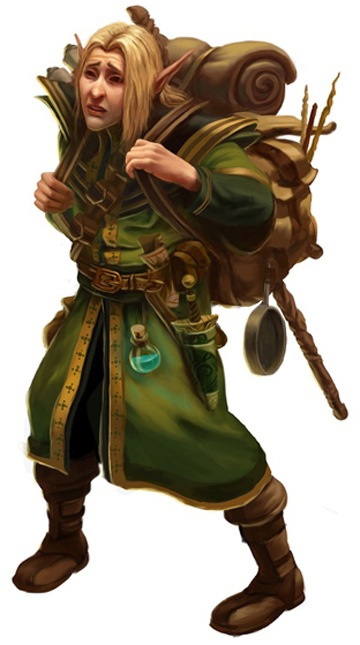
Pathfinder: 2009 was the year Pathfinder, or D&D 3.75, was released. It is now literally a household name in RPG circles for maintaining the D&D 3.0 style of play. While extremely popular, which may preclude it from this list, I think Pathfinder gets off far too easy on the complication scale because it is so widely known (being the third iteration of D20) and the core concepts are fairly accepted. However, let’s face it, this version of D&D, while getting out of the 2nd edition doldrums back into a really good base ruleset, is needlessly complicated with simply a rule for everything, tons of classes and ridiculous system mastery for the GM. With rulebooks that have the smallest type I’ve seen, if this wasn’t considered the pinnacle of D&D to some, who likely bought the Pathfinder book as a new version of a system they were already using, I think this would be a hard sell to anyone, especially these days where the barrier to entry on this complex of a system won’t be mitigated by having a very different experimental D&D version concurrently on the shelves in 4th Edition. That is, think about if Pathfinder came out TODAY. Even when I was heavy into Exalted, I picked up the book at Gencon 2009, read about half a page in the combat section and set it aside. People love it, and it’s got some great adventures if you include all of 3.0/3.5, but give me nearly any OSR clone in existence to run them rather than this beast. It was good in video games though (Temple of Elemental Evil that is).
and a monster stat block for Pathfinder around the same level as Gervisin and the B/X Great Old One stat block:
Cthulhu CR 30
XP 9,830,400
CE Colossal aberration (chaotic, evil, Great Old One)
Init +15; Senses darkvision 60 ft., true seeing; Perception +52
Aura unspeakable presence (300 ft., DC 40)
DEFENSE
AC 49, touch 29, flat-footed 44 (+12 deflection, +5 Dex, +10 insight, +20 natural, –8 size)
hp 774 (36d8+612); fast healing 30
Fort +29, Ref +29, Will +33
Defensive Abilities freedom of movement, immortality, insanity (DC 40), non-euclidean; DR 20/epic and lawful; Immune ability damage, ability drain, aging, cold, death effects, disease, energy drain, mind-affecting effects, paralysis, and petrification; Resist acid 30, electricity 30, fire 30, sonic 30; SR 41
DEFENSE
Speed 60 ft., fly 200 ft. (average), swim 60 ft.
Melee 2 claws +42 (4d6+23/19–20 plus grab), 4 tentacles +42 (2d10+34/19–20 plus grab)
Space 40 ft.; Reach 40 ft.
Special Attacks cleaving claws, constrict (3d6+23), dreams of madness, Mythic Power (10/day, Surge +1d12), powerful blows (tentacle), tentacles, trample (2d8+30, DC 51)
Spell-Like Abilities (CL 30th; concentration +42)
Constant—freedom of movement, true seeing
At will—astral projection, control weatherM, dreamM, greater dispel magic, greater teleport, insanity (DC 29), nightmareM (DC 29), sendingM
3/day—antipathy (DC 30), demand (DC 30), quickened feeblemind, gate, weird (DC 31)
1/day—implosion (DC 31), summon (level 9, 2d4 star-spawn of Cthulhu 100%), symbol of insanity (DC 30), wish M
STATISTICS
Str 56, Dex 21, Con 45, Int 31, Wis 36, Cha 34
Base Atk +27; CMB +58 (+60 bull rush, +62 grapple or sunder); CMD 97 (99 vs. bull rush or sunder)
Feats Ability Focus (nightmare), Awesome Blow, Combat Reflexes, Craft Wondrous Item, Critical Focus, Flyby Attack, Greater Sunder, Greater Vital Strike, Hover, Improved Bull Rush, Improved Critical (claw), Improved Critical (tentacle), Improved Sunder, Improved Vital Strike, Power Attack, Quicken Spell-Like Ability (feeblemind), Staggering Critical, Vital Strike
Skills Fly +36, Knowledge (arcana) +49, Knowledge (dungeoneering, engineering, geography, history, nature, planes, religion) +46, Perception +52, Sense Motive +49, Spellcraft +49, Swim +70, Use Magic Device +48
Languages Aklo; telepathy 300 ft.
SQ compression, greater starflight, otherworldly insight
SPECIAL ABILITIES
Cleaving Claws (Ex)
A single attack from one of Cthulhu’s claws can target all creatures in a 10-foot square. Make one attack roll; any creature in the area whose AC is equal to or lower than the result takes damage from the claw.
Dreams of Madness (Su)
When Cthulhu uses his nightmare spell-like ability on a creature with one or more ranks in a Craft or Perform skill, he also afflicts the creature with maddening dreams. In addition to the effect of nightmare, the target must succeed at a DC 40 Will save or contract a random insanity. This is a mind-affecting effect. A creature that already has an insanity is immune to this ability. The save DC is Charisma-based.
Greater Starflight (Su)
Cthulhu can survive in the void of outer space, and flies through outer space at incredible speeds. Although the exact travel time will vary from one trip to the next, a trip within a solar system normally takes Cthulhu 2d6 hours, and a trip beyond normally takes 2d6 days (or more, at the GM’s discretion).
Immortality (Ex)
If Cthulhu is killed, his body immediately fades away into a noxious cloud of otherworldly vapor that fills an area out to his reach. This cloud blocks vision as obscuring mist, but can’t be dispersed by any amount of wind. Any creature in this area must succeed at a DC 45 Fortitude save or be nauseated for as long as it remains in the cloud and for an additional 1d10 rounds after it leaves the area. Cthulhu returns to life after 2d6 rounds, manifesting from the cloud and restored to life via true resurrection, but is staggered for 2d6 rounds (nothing can remove this staggered effect). If slain again while he is staggered from this effect, Cthulhu reverts to vapor form again and his essence fades away after 2d6 rounds, returning to his tomb in R’lyeh until he is released again. The save DC is Constitution-based.
Non-Euclidean (Ex)
Cthulhu does not exist wholly in the physical world, and space and time strain against his presence. This grants Cthulhu a deflection bonus to AC and a racial bonus on Reflex saves equal to his Charisma modifier (+12). His apparent and actual position are never quite the same, granting him a 50% miss chance against all attacks. True seeing can defeat this miss chance, but any creature that looks upon Cthulhu while under the effects of true seeing must succeed at a DC 40 Will save or be afflicted by a random insanity (this is a mind-affecting effect). The save DC is Charisma-based.
Tentacles (Ex)
Cthulhu’s tentacles are a primary attack.
Unspeakable Presence (Su)
Failing a DC 40 Will save against Cthulhu’s unspeakable presence causes the victim to immediately die of fright. This is a death and fear effect. A creature immune to fear that fails its save against Cthulhu’s unspeakable presence is staggered for 1d6 rounds instead of killed. The save DC is Charisma-based.
Woah. Holy shit– for a D20 that’s an insane stat block. Powers, all these stats, all these acronyms too. While a ton of information given in order to use this monster, this one is still less complicated than the Exalted block by quite a bit. At least the powers are all right there in the description. What’s more this is a monster you would rarely encounter and the Exalted block would be defeated by STARTING Exalted characters…

Warhammer Fantasy Roleplay 3rd Edition: I’m not sure which of these games is the most complex, but WFRP 3rd certainly takes at least 2nd. 3rd Edition WFRP’s core concept isn’t extremely complicated or difficult to understand: one builds a pool of dice, rolls them and judges the outcome by the roll, but the layer upon layer upon layer of chits and wound tokens and cards and distance markers and party cards and wound cards and stance markers and spell cards and action cards made the learning curve ridiculous, and when you got over the hump after a few plays, really didn’t add much overall and took up a FUCK ALL ton of table space to boot. The combat also, like Exalted and Pathfinder, takes FOREVER. In comparison, the Cortex-based Marvel Heroic Roleplaying does essentially the same thing in terms of the dice pool mechanic with tiny character sheets and only ONE type of token and BAM! POW! ZAP! and combat is done. Add to this that since there were chits and counters for everything, specific NPC’s, power cards for monsters, location cards, most adventures were directly on rails, no sandboxing for you young sewer jack and rat catcher! Making one of the best parts of WFRP go missing entire.
Let’s look at a monster stat block for WFRP 3…
I’m going to Nurgle out with this one for a Greater Demon of Nurgle.
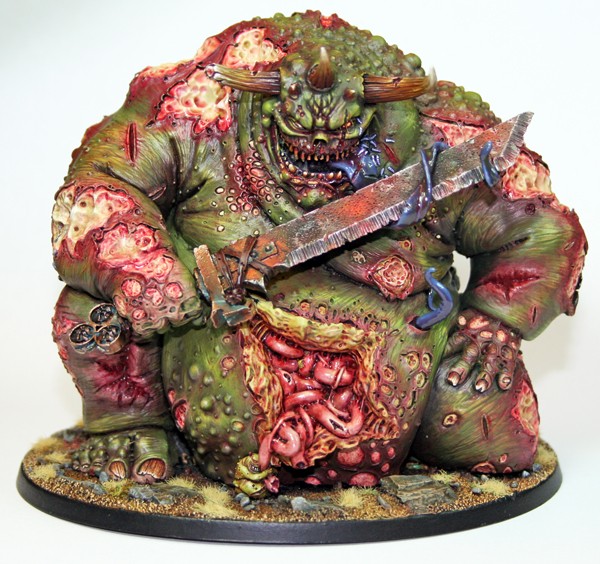
Great Unclean One
ST 7(8)
T 10(6)
Ag 5(4)
Int 6
Wp 8
Fel 6
A/C/E 10/6/8
Wounds 40
Stance: C4 (green)
Plaguefather
A great unclean one has four ranks of resilience and two ranks of training in spell craft, It favors spells with the Nurgle or chaos traits and does not need to channel or spend power to fuel it’s spells
Vile Progeny
a great unclean one’s actions gain CHAOS STAR a henchmen group of nurglings bursts forth from the great unclean one’s pustules and appear engaged with the daemon.
Card Attacks:
Purulent Attack – these are all on handy cards– I’m not going to type these in! but it goes like [Demonic, Nurgles Weapons skill vs target defense, used by: Greater Demon engaged with target with a cost] and then lists each die roll possibility (hammers, stars, comet, skulls, etc. and the effect.
Bubonic Assault
Stream of Bile
Tally of Pestilence
That’s a lot of stuff– but it is a boss monster and the cards do help. The WFRP3 one is seems to me to be the least complex of the three games listed, but still quite a bit to remember and it takes up a shitload of space all over every table in the house. At least, unlike Exalted with all it’s charms in a myriad of books (and errata– don’t forget the essential erratta!) WFRP3 has the cards that you could refer to for powers. I know I printed up a bunch of Exalted charm cards back in the day (in 2009 that is) to some good effect.
Yeah– holy shit…
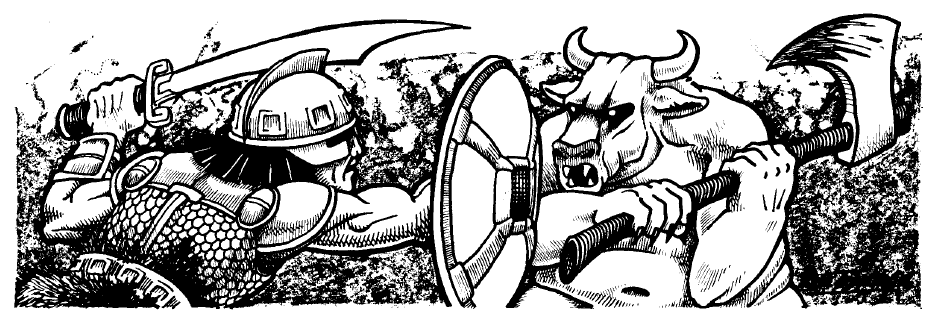
There’s my list of 2009’s mass complex RPG’s. Due to unprotected sex, I’m not up on all the games that came out in 2009 and there may be another year that both the desire and the releases were more complex, but I really think looking back, 2009 was the year that really sparked people to swing the complexity pendulum back to the simple side with games since like Marvel Heroic, Numenera, all the OSR clones (except the shitty, pointless AD&D ones.. and 2nd edition? you sicko fuckers), D&D 5, 13th Age, FATE, and even though I think it sucks, Dungeonworld. In addition, I think the crumbling of Exalted over 2007-2009 influenced people to try to make games that captured the FEEL of Exalted, without the insanely crunch, vastly complex rules but that’s an article for another day.
